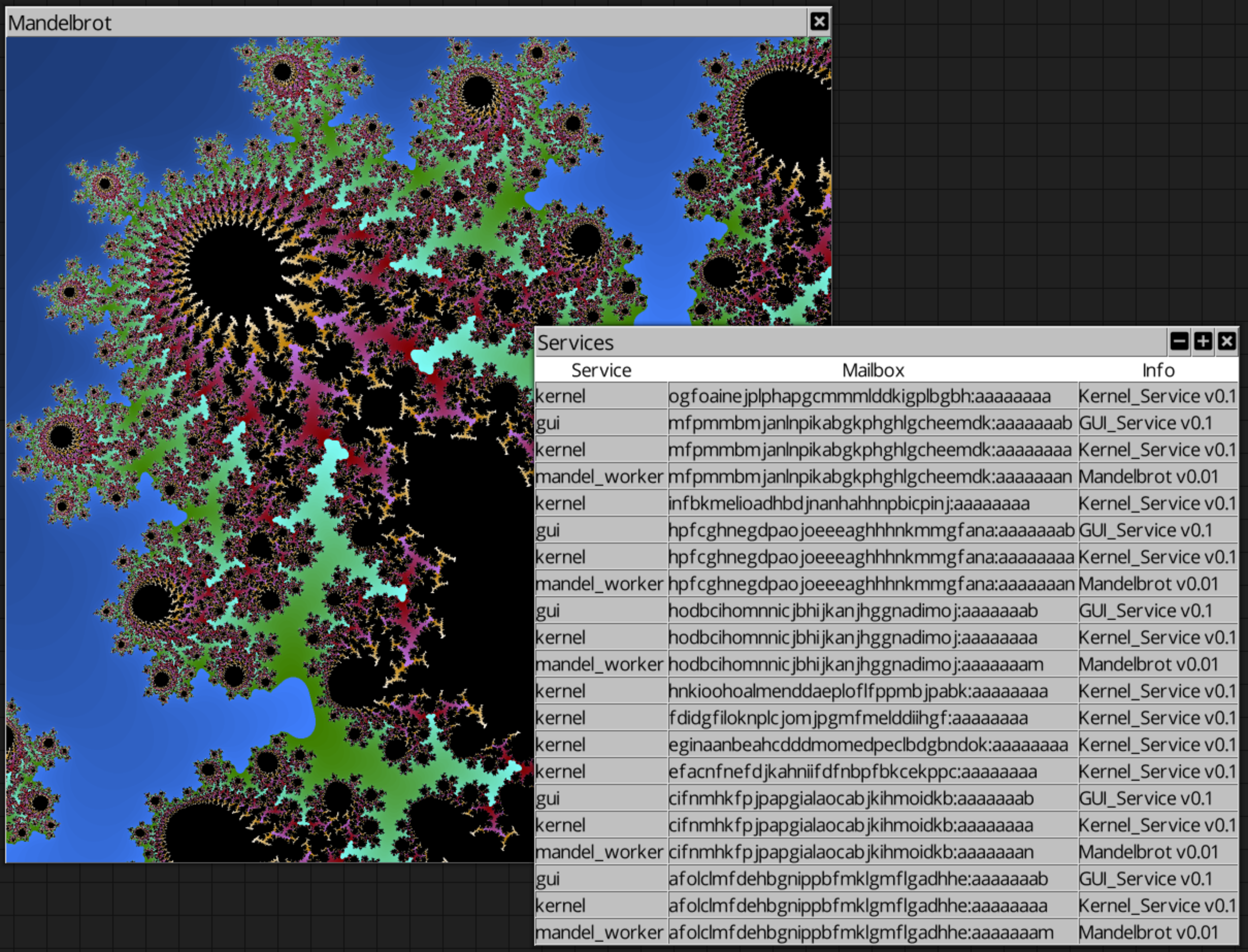C++ ChrysaLib !
A version of ChrysaLisp system concepts written in C++.
The screen shot above shows a network of 1 Intel MacBook, 1 M1 Arm MacBook, 1 x86 Linux server, 1 x86 Ubuntu 20.04 VM in Virtualbox, 1 Windows 10 PC and last but not least, 1 Raspberry PI4.
All machines running together, auto configured and sharing the demo apps work. 5 GUIs running in total across the network. Very robust as nodes come online and go offline, things just keep on keeping on !
brew install libusb asio sdl2
sudo apt-get install libasio-dev libsdl2-dev libudev-dev autoconf automake libtool git make g++
Go get the latest source tarball download from here https://libusb.info/.
Extract the archive with Extract Here from the Ubuntu UI, or with your
favorite tar application.
Go into the new extracted folder via the terminal and type:
./autogen.sh
./configure
make all
sudo make install
This should install the library into /usr/local/lib/ and the headers into
/usr/local/include/.
Download libusb v1.0.24 from https://github.com/libusb/libusb/releases and asio 1.20.0 (not the boost version) from https://think-async.com/Asio/
libusb
Add the include and lib paths for libusb to your visual studio project and add libusb-1.0.lib as an additional linker dependency.
asio
Add the include path to asio.hpp to your visual studio project there are no link dependencies as including the header also brings in any necessary libraries.
Add the following preprocessor definitions:
ASIO_STANDALONE;BOOST_ALL_NO_LIB;BOOST_CHRONO_DONT_PROVIDE_HYBRID_ERROR_HANDLING; ASIO_WINDOWS;ASIO_MSVC
sdl2
Download and install the SDL frameworks from: https://www.libsdl.org/download-2.0.php
Get the development versions for both frameworks and unzip them somewhere. Copy the .dll files from the lib folders into your ChrysaLib folder.
SDL2.dll
Add the include directory for SDL to your include path, and similarly for the lib directory. SDL2.lib and SDL2main.lib should be added as link dependencies.
Make with:
make -j
Clean with:
make clean
Run with:
hub_node [switches] [ip_addr ...]
eg. hub_node -t 10000 -usb -ip 192.168.0.64 192.168.0.65
-h: this help info
-v level: verbosity, default 0, ie none
-t ms: exit timeout, default 0, ie never
-usb: start the usb link manager
-ip: start the ip link manager server
-shm: start the shmem link manager server, (CLB-L1, CLB-L2)
So what is it ? How would I use it ? Is this all you're going to provide ?
This is the lowest layer of the ChrysaLisp messaging and services system implemented in C++. You can use this to create applications and services in C++ that can be wired together via USB or IP links.
Applications and services will automatically be kept informed as other peers join and leave the network. Whatever services these peers advertise will become available to use and you talk to them via the messaging system.
More examples will be forthcoming, but a simple File_Service example source is provided to give the flavour of what you might build as a service, but clearly whatever you can dream up.
DNS resolution for easier setup will follow soon as well as some auto wiring aid using broadcasts may be possible.
While you could use the code to construct an arbitrary setup of what process runs what services there are some practical matters to consider about who can own USB handles and such that make me suggest the following.
Run a hub_node on each machine and wire them to other peers hubs with:
./hub_node -ip -usb peer_ip peer_ip ...
These hubs take care of USB links getting plugged in between machines and run a server for IP link connections.
For an application or stand alone service, they should dial the localhost
hub_node to connect to the network with:
./hub_node 127.0.0.1
Nothing stops you from having a bundle of services as threads of a single
process, but the router for that bundle dials the local hub to give them
all access to the network.
Subnets can exist on the same Ethernet network with no issue. Only the
applications and services that have dialed another member will be seen to be
part of that subnet.
Subnets can join to each other dynamically if a link comes up between them, and they will split back into individual subnets if the link connecting them goes down.
Applications and services can be created that dynamically probe the service directory and farm out work to external resources and applications. Robust failure is easy to arrange with the timed message reading and selection lists. Discarding mailboxes and allocating fresh ones as you need allows you to silently ignore any in flight messages that may still be on route.
The File_Service standalone example app/service can be launched with:
./files_node 127.0.0.1
This example is only a base class, you would provide a subclass overriding the virtual methods to provide an implementation for a specific OS or filesystem API etc.
The GUI_Service can be launched with:
./gui_node 127.0.0.1
This is a work in progress, to port the current ChrysaLisp GUI system and widgets over to C++.
